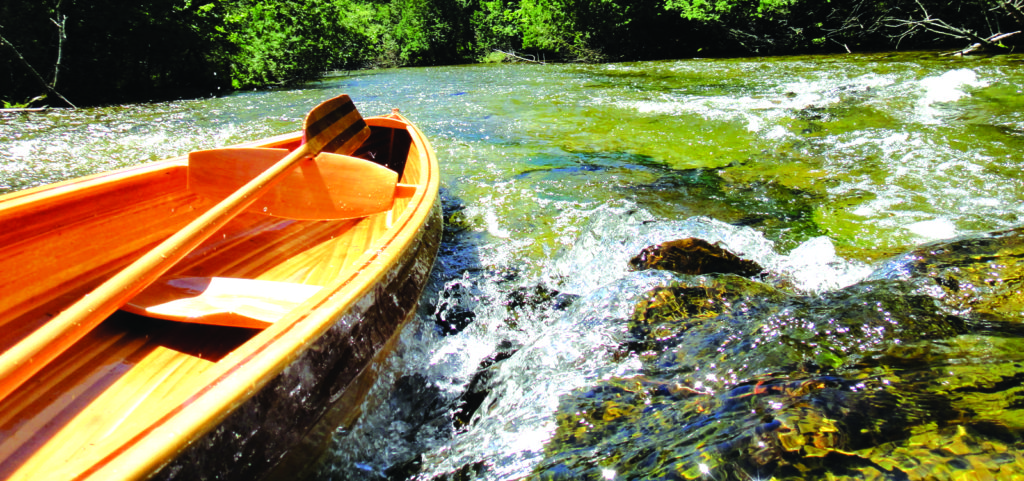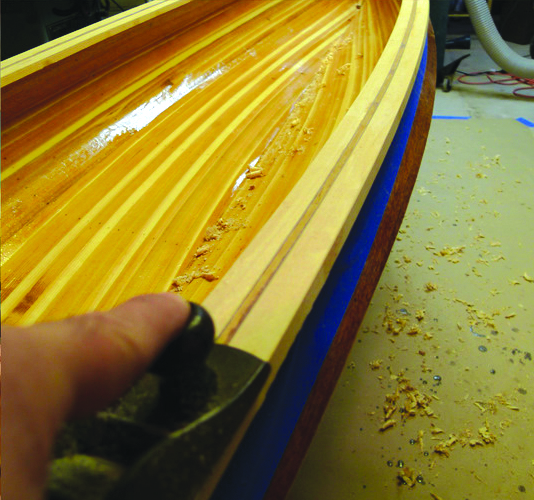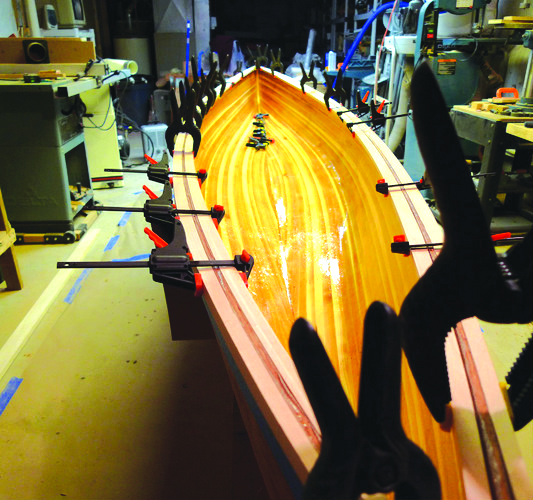Craft on the water
by D.E. Bentley –

The oar cut silently into the water and the canoe glided gracefully forward on the clear, still surface as dragonflies fluttered on nearby lily pads. I had just launched a friend’s custom-made cedar strip canoe on Canadice Lake – the smallest and, in my biased opinion, most beautiful of the Finger Lakes. It was a picture perfect day, and there was something about being out there, in that boat, that made it all the more special.
Having grown up outside of Ithaca, my boating memories are of times spent with my grandparents on Cayuga Lake. Many of our outings involved anchoring in a pleasant cove for an afternoon of swimming and relaxing. One of the most memorable experiences was traveling with them through the lock system into Canada.
My earliest experience with watercraft took the form of tractor-trailer tire inner tubes, purchased – patched and inflated – from a garage five-minutes walk from 6-Mile Creek in Tompkins County, NY. Those early times floating on tubes were a world away from the experience of floating effortlessly in that cedar strip canoe, built by my woodworker friend, Todd, evenings and weekends, lovingly, with the kind of care that goes into quality craft.
As I looked out at the blue skies I marveled at how delightfully the single person sit-on-the-bottom canoe moved across the water and was reminded of the age-old adage of form follows function. Boatbuilding in North America began with birch bark canoes crafted by the earliest inhabitants of the region and continued with French Canadian trappers, the earliest colonists. Canoes and wooden boats later offered leisurely pastime for all. A visit to the Finger Lakes Boating Museum in Hammondsport, NY offers an enlightening glimpse into our rich watercraft past.*
 That history continues today. Although newer, more durable materials have replaced earlier bark and wood canoes, the process for building a canoe, or any wooden boat has changed little. Many of the same steps are required for building any watercraft. The actually building begins with the construction of a strong back. The strong back supports the forms that the cedar strips (or other type of planking or sheathing that forms the body of the boat) are attached to. These forms are made from what my friend referred to as the “DNA” of the boat, which consists of a chart signifying plot points. These points are plotted onto paper to create a full sized rendering of the forms – a process called lofting. This process is what allows today’s boat builders to resurrect historically significant boat designs – designs that they ultimately make their own. As with anything carefully crafted by the hands of the maker, no two boats are the same. Each has personal touches that distinguish it from other similarly designed boats.
That history continues today. Although newer, more durable materials have replaced earlier bark and wood canoes, the process for building a canoe, or any wooden boat has changed little. Many of the same steps are required for building any watercraft. The actually building begins with the construction of a strong back. The strong back supports the forms that the cedar strips (or other type of planking or sheathing that forms the body of the boat) are attached to. These forms are made from what my friend referred to as the “DNA” of the boat, which consists of a chart signifying plot points. These points are plotted onto paper to create a full sized rendering of the forms – a process called lofting. This process is what allows today’s boat builders to resurrect historically significant boat designs – designs that they ultimately make their own. As with anything carefully crafted by the hands of the maker, no two boats are the same. Each has personal touches that distinguish it from other similarly designed boats.
Regardless of what draws people to the water, the draw is undeniable. Thanks to a growing number of people across the Finger Lakes who design and build small – or in some cases larger – watercraft, as well as those who restore historic boats, vibrant reminders of the past that has so defined our present remains.
For many people, the circle that leads back to the water is driven, as mine was, by enchanting childhood lake, or creekside, experiences. For others, developing a love of the lake is secondary to a related interest, such as bird watching or fishing. For my woodworking friend, it was an interest in creating beautiful things out of trees that led him to build a boat and settle in the Finger Lakes. To learn more about Todd’s boat building muse, and to see an illustrated story about the building of his cedar strip canoe, visit www.owllightnews.com/canoe-craft/.
*See related Owl Light Outings feature (back page or www.owllightnews.com/outings-fl-boating-museum/).